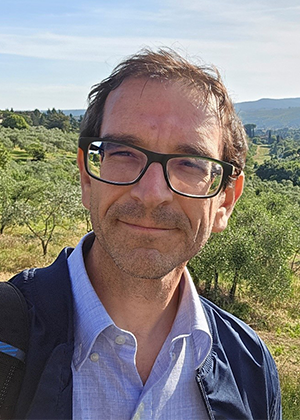USTC Astronomy Seminar Series: 2024 Spring
Reverberation of pulsar wind nebulae
Diego F. Torres 教授
西班牙空间科学研究所
2024/07/05, 4:00pm , the 19th-floor Observatory Hall

报告人:
Diego F. Torres,天体物理学教授,西班牙空间科学研究所(ICE-CSIC)前所长(2016-2023),主要研究领域为高能天体物理。Torres教授于1995年获得阿根廷拉普拉塔国立大学物理学硕士学位,1998年获得物理学博士学位,曾先后在英国苏塞克斯大学、阿根廷射电天文研究所、 美国普林斯顿大学和劳伦斯·利弗莫尔实验室等国际知名大学和机构工作,于2005年加入西班牙空间科学研究所工作至今。Torres教授是Fermi-LAT、CTA和MAGIC伽马射线天文望远镜国际合作组的成员,并曾负责合作组内科学和管理方面的工作,最长达十年之久。Torres教授获得了多项国际上的荣誉和奖励,包括德国洪堡基金的弗里德里希·威廉·贝塞尔奖、国际基础与应用物理联合会沙克蒂·杜加尔奖、阿根廷科学院物理学部加隆尼奖章、中国科学院高级国际科学家访问教授、美国航空航天局集体成就奖、美国天文学会高能天体物理最高奖罗西奖(集体)等。自1995年在《物理学快报B》发表第一篇学术论文开始,Torres教授已在物理和天文领域的国际主要期刊发表超过520篇论文,ADS统计总引用超过14500次,h因子为54。Torres教授为国际著名期刊《高能粒子天体物理》(Journal of High Energy Astrophysics,影响因子10.2)创刊主编,还曾任7部学术专著的编辑。摘要:
The vast majority of the pulsar wind nebulae (PWNe) present in the Galaxy are middle-aged systems that have gone already, or are about to go through a strong interaction of the PWN itself with the supernova remnant (SNR), a process referred to as reverberation. Modelling these systems can be quite complex and numerically expensive, due to the non-linearity of the PWN-SNR evolution even in the simple one-dimensional (1D)/one-zone case. In radiation models in fact, the details of such reverberation are either ignored, or, in a few cases, described in simplified ways. I will present some of the results of an effort to understand reverberation of PWNe in detail. In particular, I will discuss the validity of some of the usual assumptions taken, e.g., how thin is the PWN boundary or how constant (or Sedov like) is the pressure outside the PWN. I will also introduce a new numerical technique that couples the numerical efficiency of the one-zone thin shell approach with the reliability of a full 'Lagrangian' evolution that is able to correctly reproduce the PWN-SNR interaction during the reverberation and to consistently evolve the particle spectrum beyond. Our approach enables us for the first time to provide reliable spectral models of the later compression phases in the evolution of PWNe. While in general, we found that the compression is less extreme than that obtained without such detailed dynamical considerations, leading to the formation of less structured spectral energy distributions, we find that a non-negligible fraction of PWNe will experience a strong super-efficient phase, with the optical and/or X-ray luminosity exceeding the spin-down power of the pulsar at the time. 邮编:230026 ,
邮编:230026 ,  联系电话: 0551-63601861
联系电话: 0551-63601861 Email:
Email: